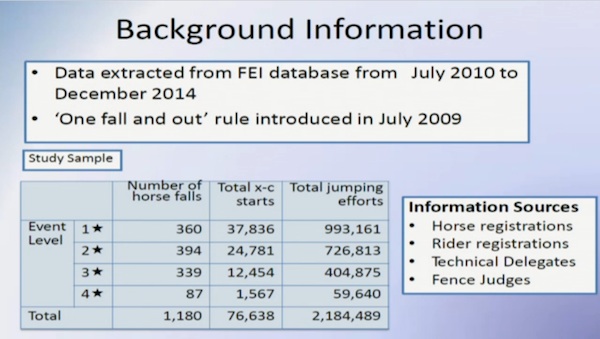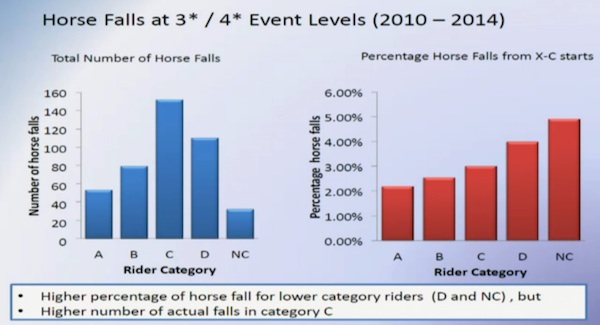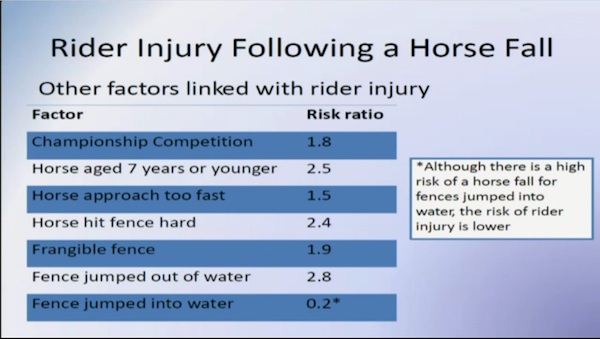During its General Assembly meeting today, Nov. 13, the Fédération Equestre Internationale presented the results of its audit on eventing. The audit, conducted by Charles Barnett, the former director of Ascot race course in Great Britain, examined data from 1,184 horse falls that occurred over the past five years.

Here are some of the major takeaways presented, some obvious, some less so:
- The percentage of falls at the four-star level is much higher than the percentage at any other levels.

- Rider experience is a contributing factor to number of falls. “Are we allowing riders not proficient enough to take place in this class of events?” said Barnett, in reference to four-star events.


ADVERTISEMENT
- Fence design also contributes to number of horse falls. Corners are the worst offenders. Barnett noted that open corners have a smaller incidence of horse falls. “Perhaps if a fence looks more challenging to a horse and rider, the combination respect it more,” he said.

- Horses fall more frequently at championships.

- Frangible pins are causing more horse falls than fences without frangible pins.

- Downhill fences cause more falls.

- Jumps into water cause a lot of falls, but they cause very few rider injuries.


ADVERTISEMENT
- The age of horses is a factor in falls, particularly rotational. Speed is too, but as there is no current objective measurement for what speed a horse approaches a fence, it’s more difficult to measure.

Though the data’s still being examined, Barnett noted there are a few ideas being considered to reduce incidence of horse falls. “There’s a strong argument in our view to restrict the top events to the top riders,” he said. “It would be helpful also if we could standardize entry requirements.
Is there an argument for further category of riders? We have four right now; maybe we need a fifth category, or there’s the option of giving riders a license.”
“There’s also the question of speed,” he continued. “Somehow we need to get accurate info about the speed of the horses as they approach fences. The fence risk factors need to be passed on to fence and course designers and technical delegates. They should be aware of high risk fences.
“We still need more analysis of frangible fence analysis. We’d also like to look at ground lines and front fence contour in detail.”














